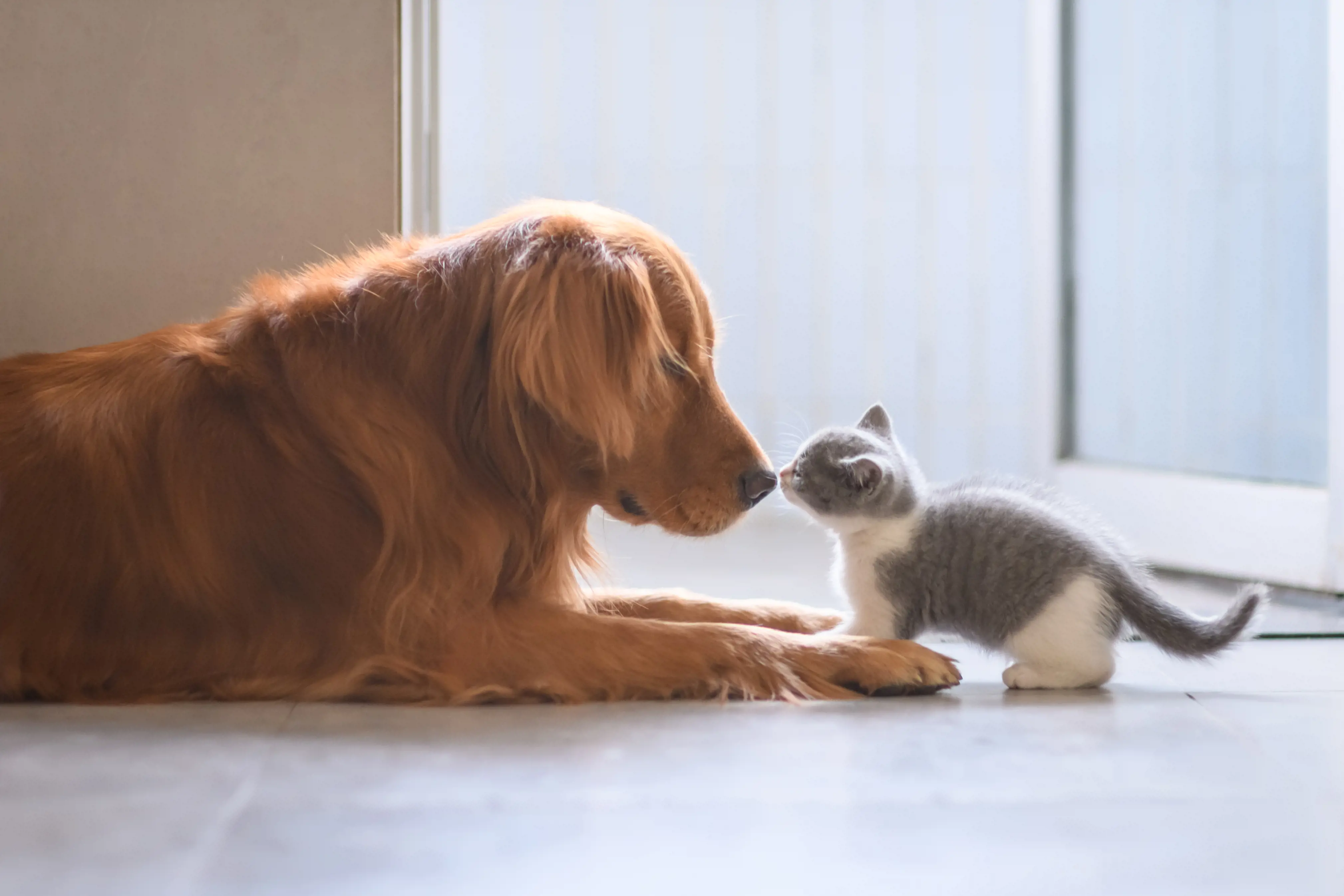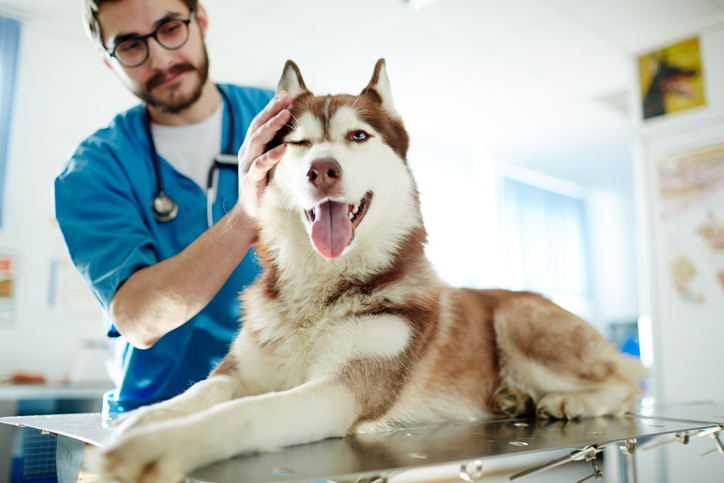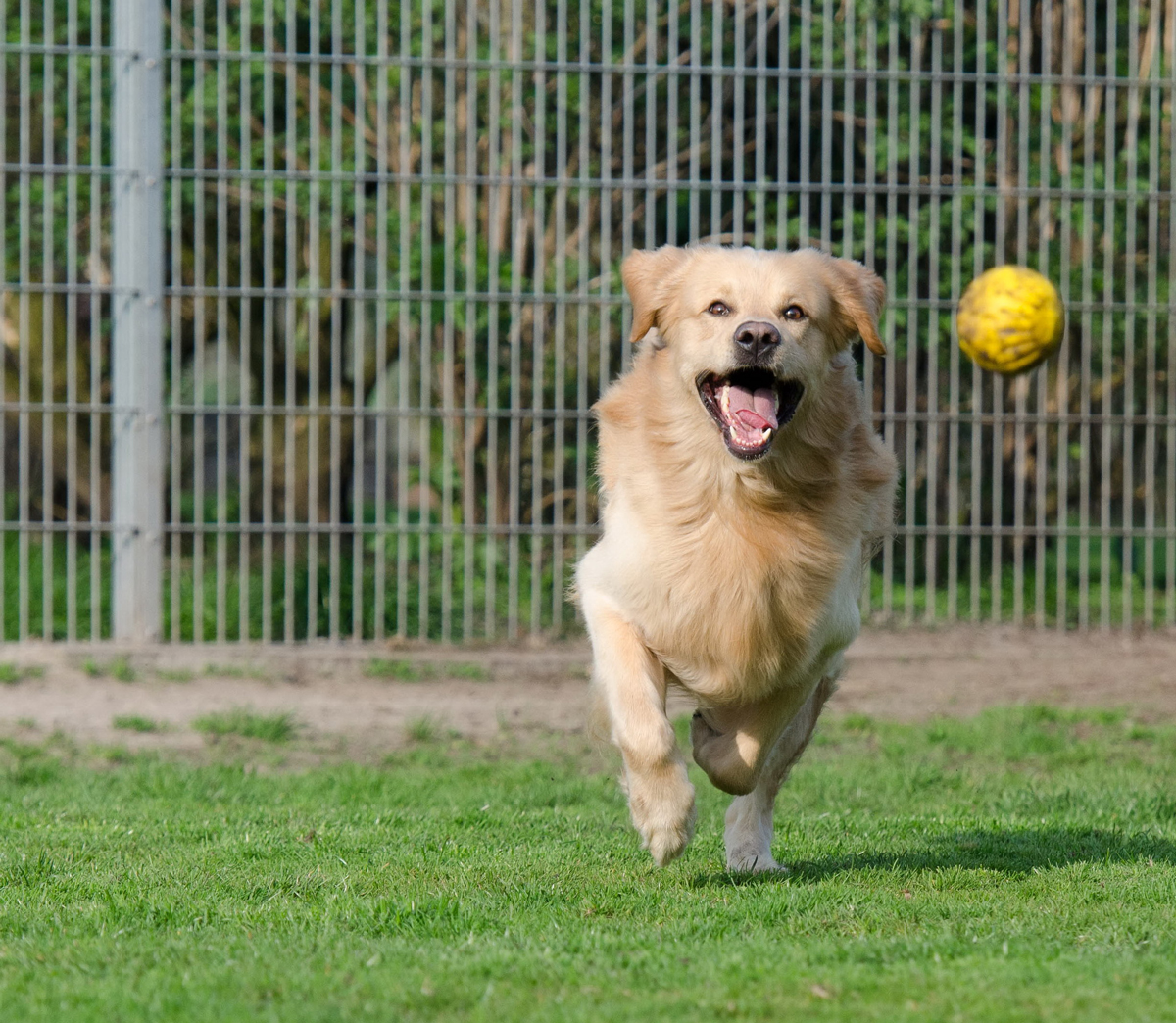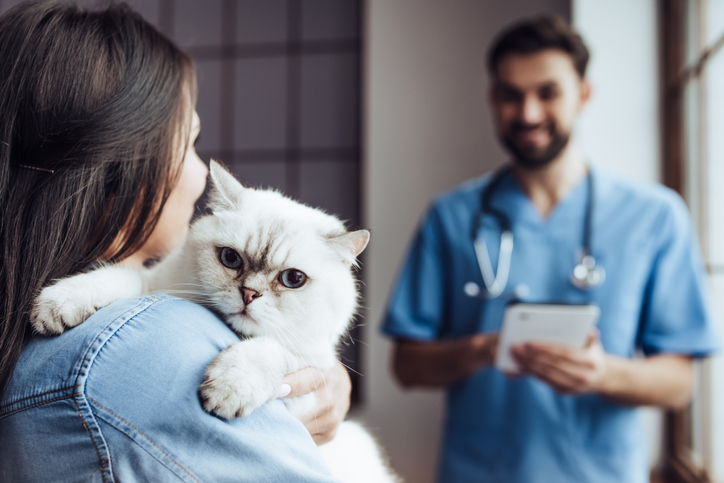Skin cancer in cats and dogs - what you need to know
11th January, 2021

Nobody likes to think about their beloved pet becoming ill, but having an awareness of some of the more serious illnesses might help them avoid lengthy treatment down the line.
Skin cancer in cats and dogs is more common than most pet parents realise — even if your cat is kept indoors!
In many cases, the prognosis is very positive and most pets treated for skin cancer go on to make a full recovery and lead a normal life without any further problems. But recovery is dependent on identifying the cancer quickly and treating it before it becomes more widespread and aggressive.
Treatment for skin cancer can be costly, with an operation to remove the cancer often needed. But this shouldn’t put you off from seeking medical advice as soon as you suspect that your cat or dog is showing some signs of skin cancer.
If you’re worried about the expense of treatment, you should arrange an insurance policy for your pet which will cover you for illnesses like skin cancer.
In this article, we’ll cover the causes of skin cancer in both cats and dogs so you can guard against your cherished pooch or feline from developing the disease.
We’ll also highlight some of the main symptoms to look out for and how it is diagnosed by a vet.
It is just the sun that causes skin cancer in dogs?
Skin cancer in dogs is typically caused by exposure to the sun, but not all cases are thought to be developed in this way.
Canines with light skin, a thin coat or a lack of fur are susceptible to skin cancer, particularly if they have suffered sunburn during any point in their lives.
As we said, however, it’s not just the sun which can cause skin cancer in dogs. Compulsive licking of certain areas can also damage the skin, making it more prone to cancer.
Meanwhile, research indicates that certain breeds of dog could have a genetic predisposition to contracting the disease.
It’s for this reason that it pays to do your research before becoming a dog owner, ensuring you understand everything about the breed of dog you’re interested in – including how much pet insurance will cost.

How do you know if your dog has been sunburnt?
Sunburn often causes red skin or hair loss. The most common areas affected are those where the skin pigmentation is low, like the ear tips, the bridge of the nose, inside legs, belly and the skin around the lips.
How do I stop my dog from developing sun-related skin cancer?
The obvious answer is to shelter your dog from the sun, especially at times of peak UV intensity, usually between 10am and 3pm.
You might want to keep them inside when the sun is particularly hot or create a well-shaded spot outside and ensure they don’t venture too far from it too often.
However, they often don’t know what’s good for them and might stray from the shaded area that you’ve created for them.
If there’s no way of keeping them out of the sun, use sunscreen to protect their skin. You want to buy a specially formulated canine sun cream, which is designed to be safe and effective for your dog.
If you’re unable to get your hands on some pet sunscreen, you can use one suitable for human babies instead.
If using a non-pet sunscreen, make sure that it is fragrance-free, isn’t going to cause any problems if ingested, is non-staining and of an SPF of at least 15, ideally 30.
Ingredients such as zinc, which are used in many adult sun creams, can be toxic to dogs if ingested i.e. licked off the skin. Apply sun cream liberally and reapply during sun exposure.
How do I know if my dog has skin cancer?
You can’t be sure your dog has skin cancer until you’ve been given an official diagnosis from your vet.
However, it’s important you are able to identify the early signs of skin cancer so that you can seek a vet’s opinion at the earliest opportunity.
Skin cancer can take many different forms, including lesions, scabs, warty lumps and bumps on the skin. They may be red, black, grey, brown or pink in colour.
When petting your pooch, keep an eye out for any unusual lumps and bumps on your dog and seek veterinary advice if you find anything unusual.
You’ll be reassured to know that most lumps are benign but if it is something more serious, swift action will give your dog the best chance of recovery.

Type of skin cancer in dogs
Skin cancer comes in a number of different forms for dogs. Your vet will be able to advise you should your dog develop the disease.
Malignant melanoma:
Malignant melanoma forms in the skin’s pigment-producing cells (called melanocytes).
It is typically found in areas of mucous membranes such as the nose and mouth, but it has, in rare cases, been found on skin with fur.
This type of cancer can quickly multiply and spread to lymph nodes and other organs. For humans, exposure to UV light is the main cause of the disease but it’s less clear what can cause malignant melanoma in dogs, with genetics thought to play a part.
Squamous cell carcinoma
Squamous cell carcinoma is primarily caused by exposure to the sun. It can often be confused for a minor abrasion but if misdiagnosed and left untreated it can quickly destroy surrounding tissue making surgery more challenging.
It takes longer to spread to other parts of the body, which means the window of successful treatment is bigger, but early intervention remains vital.
Mast cell tumours
This is the most common skin cancer seen in dogs, developing in the mast cells of a dog’s immune system. Genetics, inflammation and irritation can all play a part in the disease developing.
What’s required to diagnose skin cancer in dogs?
Upon visit to the vet, they will typically carry out a fine needle aspiration or biopsy, which will then be examined under a microscope to determine whether or not the cells are cancerous.
If the sample taken is inconclusive (sometimes a bigger sample is required, taken under general anaesthetic) the vet will discuss whether a surgical biopsy is appropriate for your pet.
What are the treatment options for skin cancer in dogs?
The good news is that most skin cancers can be treated and cured successfully, sometimes with just a simple operation to remove the lump.
Radiation or chemotherapy may also be advised depending on the nature of the cancer.
What are the chances that your dog will overcome skin cancer?
Most dogs go on to make a full recovery and are able to go about their lives without any further problems. However, prognosis will depend on the type of cancer and how advanced or aggressive it is.

How does skin cancer differ for cats?
The advice for cat owners is much the same as it is for dog owners – to keep your feline out of the sun as much as possible, especially during times of peak UV intensity.
This can be tricky for owners as cats often like to roam outside all day and night, so it might be worthwhile to keep your cat in the house on particularly hot days. On the flipside, cats will typically find a bit of shade for themselves to shelter from the sun.
If you’ve got a cat who likes to roam, apply some specially-formulated feline sun cream to protect their skin.
Many adult sun creams can be toxic for cats if licked – which you can guarantee that your cat will do – so avoid these completely.
The areas of the cat most exposed to the sun are the nose, belly, inside legs, ear tips, the skin around the lips and eyes, as well as any other area where skin pigmentation is low.
Again, the cats with light or white and/or thin or a lack of fur are most susceptible to skin cancer, while compulsive licking of certain areas – something that cats do naturally – can also damage the skin.
How do you know if your cat has been sunburnt?
Sunburn often shows itself as red skin or hair loss. Like dogs, the primary areas affected are the nose, belly, inside legs, ear tips, the skin around the lips and eyes, as well as any other area where skin pigmentation is low.
How do I know if my cat has skin cancer?
Whereas some cats love being around people and being petted, others are a little more aloof and keep themselves to themselves which can make spotting signs of skin cancer pretty tricky.
Skin cancer in cats comes in many different forms, including lesions, ulcers and scabs, which may be black, brown, grey, pink or red in colour.
If something untoward is growing on their nose, you may notice nosebleeds, breathing difficulties and nasal discharge.
Any unusual lumps need to be checked over by a vet. Your cat might’ve just got themselves into a bit of a scrape which caused the abrasion, but if you can’t be sure, seek professional advice.
If your cat does have skin cancer, early intervention will give him or her the best chance of recovery. Pet insurance should help cover the cost of treatment.

What’s required to diagnose skin cancer in cats?
A trip to the vets is required to confirm diagnosis of skin cancer for your cat. So, if you notice an unusual lump or abrasion, get your cat booked in at the earliest opportunity.
If your vet can’t rule out skin cancer, they will need to carry out a fine needle aspiration or biopsy so that the cells can be examined under a microscope to see if the lump is cancerous.
Sometimes some fluid is taken from the lymph nodes for diagnosis and X-rays may be suggested if there’s a chance that the cancer has spread.
What are the treatment options for skin cancer in cats?
Just as with dogs, most skin cancers in cats can be treated and cured successfully. If you act swiftly enough, some sores can even be treated before they turn cancerous.
However, vets will often advise for the lump to be removed with surgery just to be sure that the cancer is eradicated.
In some cases, a cat will need the outside of their ears removed to eliminate the cancer, if it develops in that area.
Radiation or chemotherapy may also be suggested. Again, pet insurance will be able to help cover the cost of treatment and rehabilitation.
What are the chances that your cat will overcome skin cancer?
While you’ll inevitably be worried about your cat should he or she get a skin cancer diagnosis, you’ll be reassured to know that most felines go on to make a full recovery and lead a normal, happy life.
Recovery time is dependent on how quickly it’s detected.
How our award-winning pet insurance can help
The last thing you want to think about should you cat or dog become ill is whether or not you can afford the vet bill – treatment for something like skin cancer can prove expensive without adequate cover, especially if an operation is required in order to cure your cat or dog.
Insurance for your pet can help protect against unexpected costs such as vet bills and paying a regular premium is much easier than finding a large lump sum in an emergency.
The dedicated team of insurance specialists at Purely Pets are here to make this as simple and straightforward as can be. If you choose Purely Pets, you’ll benefit from:
-
24-Hour Vet Helpline, staffed by veterinary professionals
-
Online claims
-
15 levels of lifetime cover
-
Lifetime cover up to £15,000
With our online policy management portal, you can also check your pet insurance documents at a time that suits you.
Old age increases the risk of cancer in dogs and cats. That’s why it’s best to protect them while they’re young.
Get a quick quote for pet insurance from Purely Pets today.
Policy benefits, features and discounts offered may very between insurance schemes or cover selected and are subject to underwriting criteria. Information contained within this article is accurate at the time of publishing but may be subject to change.
Helpful Pages
Recent Posts
Pet Insurance Quote
- 98% claims paid *
- Claims paid directly to vets
- 24/7 vet video consultations
- Interest free monthly payments




